étoile
Member
- Registriert
- 25. Juli 2005
- Beiträge
- 638
12 Essential Items for a Medical Travel Kit for Sri Lanka
- Antibiotics Drugs in Sri Lanka can be badly stored and rendered ineffective by heat
- Anti-fungal application The humid climate can produce fungal problems especially between the toes and around the groin
- Antihistamine Useful for itchy or inflamed insect bites
- Antiseptic For cuts or grazes, from thorns, coral, etc
- Bandages and plasters
- Calamine For sunburn, and insect bites and stings
- Cold and flu medications Viral infections are common throughout the year
- Diarrhoeal remedies
- Insect repellent Or try the local repellent, citronella
- Rehydration mixture For dehydration due to diarrhoea
- Thermometer For the close monitoring of fevers, which can develop rapidly
- Water purification tablets
General
The health risks in Sri Lanka are different to those encountered in Europe and North America. Watch out for bowel diseases such as diarrhoea and amoebic dysentery, vector borne diseases such as malaria and dengue fever, and a variety of fungal infections, among others. Sri Lanka’s physicians, though, many of whom have trained in the West, are particularly experienced in dealing with locally occurring diseases. Most hotels and guesthouses outside Colombo have access to a doctor who practises nearby. The problem is one of equipment and facilities, especially where rural hospitals are concerned. For anything other than minor ailments, especially if it involves treatment at a hospital, it is advisable to go to Colombo. Here there are a number of well-equipped state and private hospitals.
Unlike in Europe and North America, prescription medicines - antibiotics for example - drug can be purchased over the counter. Visitors who fall sick may therefore be tempted to self-diagnose and treat their illness. This can be risky, though, as tropical illnesses often have a complicated pathology. You should seek medical advice wherever possible.
Vaccinations and Immunization
No inoculations are compulsory unless you are coming from a yellow fever or cholera area. (Cholera is very occasionally reported in Sri Lanka, so is not considered a serious risk.) However, the following vaccinations are recommended, particularly if you plan a long trip or intend visiting remote areas:
typhoid (monovalent)
polio
tetanus
hepatitis A
hepatitis B
rabies
Children should, in addition, be protected against:
diphtheria
whooping cough
mumps
measles
rubella
Remember to plan well ahead with vaccinations. Allow up to six weeks to receive the full course, for some vaccinations require more than one dose, and some should not be given together.
Food
Unless they are self-catering (unlikely in Sri Lanka), visitors do not have much control over the all-important way in which their food is prepared. However, as most stomach upsets are due to the unsanitary preparation of food, it is useful to know what to watch out for. Under cooked fish (especially shellfish) and meat (especially pork and mince) can pose a hazard. Salads can be risky unless purified water has been used to wash the various vegetables. Fruit that has already been peeled should be avoided. Be careful of ice cream, in particular the varieties sold by street vendors and served at cheap restaurants. As power cuts are rife in Sri Lanka, especially away from urban centres, it pays to be suspicious of all refrigerated foods if you know there has been a recent cut in your area.
Water
As with food, it is difficult for visitors to have control over the quality of the water they drink. Tap water is not safe to drink, and boiling and filtering is sometimes done too hastily in some hotels and restaurants, so the best solution, though an expensive one, is to drink bottled water. There are now many brands available, mostly using spring water from the highlands of the island. Make sure the seal is broken only in your presence. Beware of ice unless you are satisfied it has not been made from tap water, and remember the tap water you may be tempted to use to rinse out your mouth after brushing your teeth is unsafe. Keep a bottle of water in your bathroom for this purpose.
If you are in a situation where you are unable to obtain bottled water - camping, trekking, etc - there are two methods to purify water. However, you need at least a filter and preferably apparatus to boil the water. First, strain the water through a filter to take out any particles and dirt. Then boil it thoroughly. If you are in the lowlands 2 to 3 minutes is adequate, but if you are in the highlands allow 5 to 10 minutes to ensure that all the microbes are killed. An easier alternative is to use a sterilizing method - chlorine or iodine - after filtering (such methods only work effectively if the water is filtered first). Chlorine tablets will kill most pathogens but not some parasites. Iodine is considered more efficient.
Heatstroke
Sometimes visitors who have spent too long in the sun suffer what is termed heatstroke, the most common form being caused by dehydration. This condition can occur if the body’s heat-regulating mechanism breaks down and the body temperature rises to dangerous levels. The symptoms are a high temperature (yet a lack of sweat), a flushed skin, severe headache, and impaired coordination. In addition, the sufferer may become confused or aggressive. If you think someone has heatstroke, take him or her out of the sun, cover his or her body with a wet sheet or towel, and seek medical advice. To avoid heatstroke, take plenty of bottled water to the beach, or buy a thambili (king coconut) from an itinerant seller.
Sunburn
The burning power of the sun is phenomenal in Sri Lanka, even when there is substantial cloud cover. Visitors with fair skins should not spend more than 10 minutes in the sun to begin with. If you do spend longer, you will find that in a few hours you will be in considerable discomfort and unable to sunbathe for several days. When your skin has received a basic tan, you can increase the exposure time. Avoid the sun around midday. Wear a wide brimmed hat while on the beach and use high protective factor suntan lotions designed specifically for the tropics. Glare from the sun is considerable on the beach and can cause conjunctivitis, so wear good quality sunglasses.
Fungal Infections
Fungal infections can be a problem in the hot and humid climatic conditions of Sri Lanka. They are mostly found between the toes (“athlete’s foot”) and around the groin (“dhobi’s itch”) and on the body (the inappropriately named “ringworm”). To prevent fungal infections wear loose boxer shorts rather than tight underpants. If you wear shoes and socks, try to minimise the time spent in them. Avoid artificial fibres. Allow shoes to air. Wash socks, underwear and towels in boiling water. Dry the skin carefully, especially between the toes and around the groin.
If you do get an infection you can tell from the red, itchy skin. Unless you are careful about scratching, especially between the toes, it can become raw, making it difficult to walk. If it is an infection in the early stages, wash the infected area with a disinfectant or medicated soap. Dry well and apply an anti fungal cream or powder. If it is an advanced infection, bathe the foot in a solution of condis crystals. Antibiotics may be necessary if the infection persists. Try to expose the area to air or sunlight as much as possible.
Prickly Heat
Some visitors who have recently arrived in the country break out in an itchy rash caused by excessive perspiration trapped under the skin. Prickly heat, as it is termed, is avoided or alleviated by keeping cool, bathing often, and drying the skin and using a mild talcum or prickly heat powder or ointment. Try to keep as cool as possible by staying under a fan or using air-conditioning.
Bedbugs
Bedbugs are sometimes encountered in guesthouses and even some lower grade hotels. They live in old, unhygienic mattresses and attack you after you have lain down, leaving you with itching bites that make sleep impossible. Complain at once to the management and insist on having the mattress changed. Apply calamine lotion for relief.
Leeches
Leeches have been the bane of travellers in Sri Lanka since early times. These voracious pests are prevalent in damp rainforest conditions and in the lower hills and are of particular concern to trekkers. As one 19th century lady traveller wrote: “The land leeches, which swarm in damp places and luxuriant grass, have no tendency to fly from man. On the contrary, the footfall of man or beast is as a welcome dinner-bell, at sound of which the hungry little creatures hurry from all sides; and as each is furnished with five pairs of eyes, they can keep a sharp look-out for their prey, which they do by resting on the tip of the tail, and raising themselves perpendicularly to look around. Then, arching their body head-foremost, and bringing up the tail, they rapidly make for their victim. Being only about an inch long, and no thicker than a stout pin, they contrive to wriggle through stockings, and commence their attack so gently that several may be feasting without attracting attention, till being gorged, and distended to about a couple of inches in length, and the size of a quill-pen, they cease sucking; but blood sometimes continues to flow till checked by a squeeze of lemon juice.”
Therefore it is necessary to take adequate precaution against leeches in such terrain. Soap or lime applied to the feet and legs will deter them. If you do get bitten, remember to try not to pull the leech off, for the head will be left behind, and a stubborn infection can result. Instead apply salt or the tip of a lighted cigarette to the leech. It will then release its hold and drop off.
Sandflies
Sandflies are seasonally encountered on Sri Lanka’s beaches. The bite of the sandfly, like the mosquito, is relatively painless (although itchy) but can have serious consequences. The sandfly can transmit a group of parasitic diseases known as leishmaniasis. Cutaneous leishmaniasis causes ulceration and disfigurement of the skin, while visceral leishmaniasis affects the internal organs. The best precaution is to avoid sandfly bites by applying insect repellent.
Ticks
You are unlikely to encounter ticks unless you are walking though jungle areas and grasslands. If you do, make sure you check for ticks soon afterwards, and if you find one, make sure you extract it properly, for tick bites can easily become infected and result in serious illness. The best method is to use tweezers to pull the tick off gently by the head.
There is an infection transmitted by ticks called Lyme disease. Usually it begins with a rash around the tick bite, and is characterised by fever, headache, extreme fatigue, and aching joints and muscles. In many instances these symptoms disappear within a few weeks without medical assistance. However, it is best to seek treatment early, for disorders of the nervous system, heart and joints may develop over time.
Scorpions
Although scorpion stings are extremely painful, they are rarely fatal. Scorpions can be found in many tourist areas, from coastal Hikkaduwa to mountainous Kandy, so visitors should be alert, although the risk is small. While walking along paths or through scrubland areas it is essential to develop the ability of having one eye on the ground to scour for scorpions (and snakes of course). In addition, it is important to remember that scorpions are sometimes found indoors in shoes or even bundles of clothes. There are two types of scorpion in Sri Lanka. One is quite large, mostly purple with yellowish legs, while the other is smaller and a dirty olive in colour. It is the latter species that seems to be responsible for most scorpion bites in Sri Lanka.
James Emerson Tennent describes the stages of a scorpion bite in his book Ceylon (1858): “The bite at first does not occasion more suffering than would arise from the penetration of two coarsely-pointed needles; but after a little time the wound swells, becomes acutely painful, and if it be over a bone or any other resisting part, the sensation is so intolerable as to produce fever. The agony subsides after a few hours duration.”
Snakes
“If a tenth part of the stories related about the superabundance of snakes in the island were true, one might expect to find them in every house, in every compound, or on every lawn, as well as upon the branches of every tree. Where jungle is being cleared, numerous snakes are found, as they are in even temperate climes. Now and then, they are met with upon the ramparts and esplanades of forts, but where one snake, so found, is venomous, ten are harmless.”
This is the way in which J. W. Bennett, writing in Ceylon and its Capabilities (1843), tries to dispel the common misconception that a profusion of venomous snakes is to be found on the island. Today not much has changed. The fact is that while Sri Lanka is home to at least 83 species of snake, there are only five that are so venomous that they pose a danger to humans. Of these, the three most likely to be found in tourist areas are the cobra, the Russell’s viper and the krait.
While it is true that Sri Lanka does have a high snakebite mortality rate, there have been no fatalities among tourists for many years. The people who do fall victim are mostly villagers. They are usually bitten in the night, either when they accidentally roll onto a snake while sleeping, or step on one while visiting outside toilets.
It is important to realise that snakes attack only in self-defence, and that venomous snakes have different temperaments. For instance, it is generally believed that the cobra, while fearsome, is not an aggressive snake. The Russell’s viper, on the other hand, is considered vicious in comparison.
The cobra and Russell’s viper can be found even in the vicinity of Colombo, but are most common in the dry zone, to which tourists travel to visit the sites of the Cultural Triangle. If you are wandering around the ruins of Anuradhapura or Polonnaruwa for instance, and you leave the well-trodden pathways, be careful not to tread on any snakes that may be around. It is important to develop the ability to keep one eye on the ground. Although, they cannot hear they feel vibrations, so if you tread with purpose and use a stick to hit the ground at intervals, snakes will generally retreat.
To minimise the chance of being bitten always wear shoes or preferably boots and long trousers rather than shorts when walking through areas where snakes may be present. Do not put your hands into holes (the cobra is known to live in them) and if you are camping, be careful when collecting firewood (the Russell’s viper is often found under logs). If you have to give first aid to a snakebite victim, immobilise the affected limb and wrap a bandage as tightly as possible around it, releasing it for 90 seconds every 15 minutes. Keep the victim still, try to give reassurance and proceed to the nearest hospital or doctor.
Rabies
Dogs are not indigenous to Sri Lanka; the Portuguese introduced them in the 16th century. Today, as many animal-loving visitors will note, there are many stray dogs, or pariahs, roaming the streets of every town and village. It was the same in previous centuries, too, for James Emerson Tennent notes in his book Ceylon (1858): “They are a miserable race, lean, wretched, mangy, acknowledged by no owners, living on the garbage of the streets, and sewers, and if spoken to unexpectedly, they shrink with an almost involuntary cry. Yet in these persecuted outcasts their survives that germ of instinctive affection which binds the dog to the human race, and a gentle word, even a look of compassionate kindness, is sufficient foundation for lasting attachment.”
Sri Lanka’s chronic stray dog situation is not only a cause for concern among animal lovers, for it is a potential public health problem due to rabies, which is endemic to the country. While these dogs deserve attention and to be fed, beware of any dog behaving in a strange manner. If you are bitten or scratched by a suspect dog, scrub the area with soap or disinfectant and apply alcohol and iodine solution. Immediately seek medical help to ascertain whether you need to receive the necessary course of injections.
Remember that other animals, such as cats, bats and monkeys, can transmit rabies. Be particularly cautious of monkeys that live in the vicinity of hotels. They can be very aggressive and lunge forward swiftly to inflict a painful bite.
Diarrhoea
Diarrhoea is usually the result of food poisoning, or in some instances, contaminated water. But remember that travelling and a change of environment can also bring about this debilitating illness. There are various causes - viruses, bacteria, prozoa, salmonella, and cholera organisms. The illness either comes on suddenly, or slowly, and may be accompanied by vomiting or by severe abdominal pain. When the diarrhoea contains blood it is called dysentery. Treatment of diarrhoea involves rest, and most importantly, fluid and salt replacement. Indeed, dehydration is the main cause for concern with diarrhoea, particularly with children or the elderly. Black tea, soda water or coconut water are all good fluid replacements, but if the attack is severe, oral rehydration salts (ORS) may need to be administered.
Dengue Fever
Dengue fever is prevalent in Sri Lanka and much of the tropical world. It is a viral disease transmitted by mosquitoes, and it is becoming a major health problem. Sadly, children in Sri Lanka sometimes fall fatally ill with the disease. Unlike the malarial mosquito, the species that transmits dengue fever is most active during the day, and is found mainly in and around urban areas. This means that tourists in such areas need to take precaution against daytime as well as night time mosquitoes. Symptoms include a high fever, severe headache, joint and muscle pains, nausea and vomiting. The disease is often mistaken for other infectious diseases during the early stages. Patients can develop a complicated type of the disease known as dengue haemorrhagic fever, which is characterised by severe bleeding. Although this type is serious, it usually affects residents rather than visitors. There is no treatment, so it is important that you avoid mosquito bites as much as possible.
Malaria
The risk of malaria exists throughout the year in the whole of the island except the districts of Colombo, Kalutara and Nuwara Eliya. If you are travelling in endemic areas it is extremely important to avoid mosquito bites and to take tablets to prevent the disease. However, malaria prevention is becoming more complex as the malaria parasite becomes immune to some of the older drugs. Furthermore, you can catch malaria even when taking prophylactic drugs. If you develop symptoms such as high fever, shivering, sweating, headache, diarrhoea or abdominal pain, seek medical advice immediately. Remember that symptoms can occur up to a year after leaving the malaria-infected area.
The prevention of mosquito bites is the best way to ensure this disease is not contracted. Cover up exposed skin at dusk by wearing light-coloured clothing that protects both legs and arms. Avoid perfumes and aftershave. Use mosquito repellent or gel on exposed areas of skin, and a net to sleep under (preferably impregnated with mosquito repellent).
Hepatitis A and B
Hepatitis, which is an inflammation of the liver, is common in Sri Lanka. Although there are several different viruses that cause hepatitis, the symptoms are common to all. They include fever, chills, headache, and aches and pains, followed by loss of appetite, vomiting, abdominal pain, jaundiced skin and the yellowing of the whites of the eyes.
Hepatitis A is transmitted by contaminated food and water. Many travellers contract this type of the disease, so protection is strongly recommended.
Hepatitis B is a sexually transmitted disease also passed on from blood transfusions or infected needles. The symptoms of hepatitis B are often more severe than type A and can often lead to chronic liver damage.
Regular travellers should have a blood test to determine whether they are already immune to Hepatitis A or B.
Typhoid
Typhoid fever is a dangerous gut infection, caused by contaminated water and food, which occurs in Sri Lanka. Initially victims may feel they have a bad cold or influenza, as the first symptoms are almost identical - headache, body ache and a fever that increases daily. The victim’s pulse is often slow, and there may be vomiting, abdominal pain, diarrhoea or constipation. The disease enters a new phase in the second week when pink spots appear on the body, accompanied by trembling, delirium, weight loss and dehydration. Medical help must be sought without delay.
http://www.travelsrilanka.com/sidelinks/traveltips/health.php
- Antibiotics Drugs in Sri Lanka can be badly stored and rendered ineffective by heat
- Anti-fungal application The humid climate can produce fungal problems especially between the toes and around the groin
- Antihistamine Useful for itchy or inflamed insect bites
- Antiseptic For cuts or grazes, from thorns, coral, etc
- Bandages and plasters
- Calamine For sunburn, and insect bites and stings
- Cold and flu medications Viral infections are common throughout the year
- Diarrhoeal remedies
- Insect repellent Or try the local repellent, citronella
- Rehydration mixture For dehydration due to diarrhoea
- Thermometer For the close monitoring of fevers, which can develop rapidly
- Water purification tablets
General
The health risks in Sri Lanka are different to those encountered in Europe and North America. Watch out for bowel diseases such as diarrhoea and amoebic dysentery, vector borne diseases such as malaria and dengue fever, and a variety of fungal infections, among others. Sri Lanka’s physicians, though, many of whom have trained in the West, are particularly experienced in dealing with locally occurring diseases. Most hotels and guesthouses outside Colombo have access to a doctor who practises nearby. The problem is one of equipment and facilities, especially where rural hospitals are concerned. For anything other than minor ailments, especially if it involves treatment at a hospital, it is advisable to go to Colombo. Here there are a number of well-equipped state and private hospitals.
Unlike in Europe and North America, prescription medicines - antibiotics for example - drug can be purchased over the counter. Visitors who fall sick may therefore be tempted to self-diagnose and treat their illness. This can be risky, though, as tropical illnesses often have a complicated pathology. You should seek medical advice wherever possible.
Vaccinations and Immunization
No inoculations are compulsory unless you are coming from a yellow fever or cholera area. (Cholera is very occasionally reported in Sri Lanka, so is not considered a serious risk.) However, the following vaccinations are recommended, particularly if you plan a long trip or intend visiting remote areas:
typhoid (monovalent)
polio
tetanus
hepatitis A
hepatitis B
rabies
Children should, in addition, be protected against:
diphtheria
whooping cough
mumps
measles
rubella
Remember to plan well ahead with vaccinations. Allow up to six weeks to receive the full course, for some vaccinations require more than one dose, and some should not be given together.
Food
Unless they are self-catering (unlikely in Sri Lanka), visitors do not have much control over the all-important way in which their food is prepared. However, as most stomach upsets are due to the unsanitary preparation of food, it is useful to know what to watch out for. Under cooked fish (especially shellfish) and meat (especially pork and mince) can pose a hazard. Salads can be risky unless purified water has been used to wash the various vegetables. Fruit that has already been peeled should be avoided. Be careful of ice cream, in particular the varieties sold by street vendors and served at cheap restaurants. As power cuts are rife in Sri Lanka, especially away from urban centres, it pays to be suspicious of all refrigerated foods if you know there has been a recent cut in your area.
Water
As with food, it is difficult for visitors to have control over the quality of the water they drink. Tap water is not safe to drink, and boiling and filtering is sometimes done too hastily in some hotels and restaurants, so the best solution, though an expensive one, is to drink bottled water. There are now many brands available, mostly using spring water from the highlands of the island. Make sure the seal is broken only in your presence. Beware of ice unless you are satisfied it has not been made from tap water, and remember the tap water you may be tempted to use to rinse out your mouth after brushing your teeth is unsafe. Keep a bottle of water in your bathroom for this purpose.
If you are in a situation where you are unable to obtain bottled water - camping, trekking, etc - there are two methods to purify water. However, you need at least a filter and preferably apparatus to boil the water. First, strain the water through a filter to take out any particles and dirt. Then boil it thoroughly. If you are in the lowlands 2 to 3 minutes is adequate, but if you are in the highlands allow 5 to 10 minutes to ensure that all the microbes are killed. An easier alternative is to use a sterilizing method - chlorine or iodine - after filtering (such methods only work effectively if the water is filtered first). Chlorine tablets will kill most pathogens but not some parasites. Iodine is considered more efficient.
Heatstroke
Sometimes visitors who have spent too long in the sun suffer what is termed heatstroke, the most common form being caused by dehydration. This condition can occur if the body’s heat-regulating mechanism breaks down and the body temperature rises to dangerous levels. The symptoms are a high temperature (yet a lack of sweat), a flushed skin, severe headache, and impaired coordination. In addition, the sufferer may become confused or aggressive. If you think someone has heatstroke, take him or her out of the sun, cover his or her body with a wet sheet or towel, and seek medical advice. To avoid heatstroke, take plenty of bottled water to the beach, or buy a thambili (king coconut) from an itinerant seller.
Sunburn
The burning power of the sun is phenomenal in Sri Lanka, even when there is substantial cloud cover. Visitors with fair skins should not spend more than 10 minutes in the sun to begin with. If you do spend longer, you will find that in a few hours you will be in considerable discomfort and unable to sunbathe for several days. When your skin has received a basic tan, you can increase the exposure time. Avoid the sun around midday. Wear a wide brimmed hat while on the beach and use high protective factor suntan lotions designed specifically for the tropics. Glare from the sun is considerable on the beach and can cause conjunctivitis, so wear good quality sunglasses.
Fungal Infections
Fungal infections can be a problem in the hot and humid climatic conditions of Sri Lanka. They are mostly found between the toes (“athlete’s foot”) and around the groin (“dhobi’s itch”) and on the body (the inappropriately named “ringworm”). To prevent fungal infections wear loose boxer shorts rather than tight underpants. If you wear shoes and socks, try to minimise the time spent in them. Avoid artificial fibres. Allow shoes to air. Wash socks, underwear and towels in boiling water. Dry the skin carefully, especially between the toes and around the groin.
If you do get an infection you can tell from the red, itchy skin. Unless you are careful about scratching, especially between the toes, it can become raw, making it difficult to walk. If it is an infection in the early stages, wash the infected area with a disinfectant or medicated soap. Dry well and apply an anti fungal cream or powder. If it is an advanced infection, bathe the foot in a solution of condis crystals. Antibiotics may be necessary if the infection persists. Try to expose the area to air or sunlight as much as possible.
Prickly Heat
Some visitors who have recently arrived in the country break out in an itchy rash caused by excessive perspiration trapped under the skin. Prickly heat, as it is termed, is avoided or alleviated by keeping cool, bathing often, and drying the skin and using a mild talcum or prickly heat powder or ointment. Try to keep as cool as possible by staying under a fan or using air-conditioning.
Bedbugs
Bedbugs are sometimes encountered in guesthouses and even some lower grade hotels. They live in old, unhygienic mattresses and attack you after you have lain down, leaving you with itching bites that make sleep impossible. Complain at once to the management and insist on having the mattress changed. Apply calamine lotion for relief.
Leeches
Leeches have been the bane of travellers in Sri Lanka since early times. These voracious pests are prevalent in damp rainforest conditions and in the lower hills and are of particular concern to trekkers. As one 19th century lady traveller wrote: “The land leeches, which swarm in damp places and luxuriant grass, have no tendency to fly from man. On the contrary, the footfall of man or beast is as a welcome dinner-bell, at sound of which the hungry little creatures hurry from all sides; and as each is furnished with five pairs of eyes, they can keep a sharp look-out for their prey, which they do by resting on the tip of the tail, and raising themselves perpendicularly to look around. Then, arching their body head-foremost, and bringing up the tail, they rapidly make for their victim. Being only about an inch long, and no thicker than a stout pin, they contrive to wriggle through stockings, and commence their attack so gently that several may be feasting without attracting attention, till being gorged, and distended to about a couple of inches in length, and the size of a quill-pen, they cease sucking; but blood sometimes continues to flow till checked by a squeeze of lemon juice.”
Therefore it is necessary to take adequate precaution against leeches in such terrain. Soap or lime applied to the feet and legs will deter them. If you do get bitten, remember to try not to pull the leech off, for the head will be left behind, and a stubborn infection can result. Instead apply salt or the tip of a lighted cigarette to the leech. It will then release its hold and drop off.
Sandflies
Sandflies are seasonally encountered on Sri Lanka’s beaches. The bite of the sandfly, like the mosquito, is relatively painless (although itchy) but can have serious consequences. The sandfly can transmit a group of parasitic diseases known as leishmaniasis. Cutaneous leishmaniasis causes ulceration and disfigurement of the skin, while visceral leishmaniasis affects the internal organs. The best precaution is to avoid sandfly bites by applying insect repellent.
Ticks
You are unlikely to encounter ticks unless you are walking though jungle areas and grasslands. If you do, make sure you check for ticks soon afterwards, and if you find one, make sure you extract it properly, for tick bites can easily become infected and result in serious illness. The best method is to use tweezers to pull the tick off gently by the head.
There is an infection transmitted by ticks called Lyme disease. Usually it begins with a rash around the tick bite, and is characterised by fever, headache, extreme fatigue, and aching joints and muscles. In many instances these symptoms disappear within a few weeks without medical assistance. However, it is best to seek treatment early, for disorders of the nervous system, heart and joints may develop over time.
Scorpions
Although scorpion stings are extremely painful, they are rarely fatal. Scorpions can be found in many tourist areas, from coastal Hikkaduwa to mountainous Kandy, so visitors should be alert, although the risk is small. While walking along paths or through scrubland areas it is essential to develop the ability of having one eye on the ground to scour for scorpions (and snakes of course). In addition, it is important to remember that scorpions are sometimes found indoors in shoes or even bundles of clothes. There are two types of scorpion in Sri Lanka. One is quite large, mostly purple with yellowish legs, while the other is smaller and a dirty olive in colour. It is the latter species that seems to be responsible for most scorpion bites in Sri Lanka.
James Emerson Tennent describes the stages of a scorpion bite in his book Ceylon (1858): “The bite at first does not occasion more suffering than would arise from the penetration of two coarsely-pointed needles; but after a little time the wound swells, becomes acutely painful, and if it be over a bone or any other resisting part, the sensation is so intolerable as to produce fever. The agony subsides after a few hours duration.”
Snakes
“If a tenth part of the stories related about the superabundance of snakes in the island were true, one might expect to find them in every house, in every compound, or on every lawn, as well as upon the branches of every tree. Where jungle is being cleared, numerous snakes are found, as they are in even temperate climes. Now and then, they are met with upon the ramparts and esplanades of forts, but where one snake, so found, is venomous, ten are harmless.”
This is the way in which J. W. Bennett, writing in Ceylon and its Capabilities (1843), tries to dispel the common misconception that a profusion of venomous snakes is to be found on the island. Today not much has changed. The fact is that while Sri Lanka is home to at least 83 species of snake, there are only five that are so venomous that they pose a danger to humans. Of these, the three most likely to be found in tourist areas are the cobra, the Russell’s viper and the krait.
While it is true that Sri Lanka does have a high snakebite mortality rate, there have been no fatalities among tourists for many years. The people who do fall victim are mostly villagers. They are usually bitten in the night, either when they accidentally roll onto a snake while sleeping, or step on one while visiting outside toilets.
It is important to realise that snakes attack only in self-defence, and that venomous snakes have different temperaments. For instance, it is generally believed that the cobra, while fearsome, is not an aggressive snake. The Russell’s viper, on the other hand, is considered vicious in comparison.
The cobra and Russell’s viper can be found even in the vicinity of Colombo, but are most common in the dry zone, to which tourists travel to visit the sites of the Cultural Triangle. If you are wandering around the ruins of Anuradhapura or Polonnaruwa for instance, and you leave the well-trodden pathways, be careful not to tread on any snakes that may be around. It is important to develop the ability to keep one eye on the ground. Although, they cannot hear they feel vibrations, so if you tread with purpose and use a stick to hit the ground at intervals, snakes will generally retreat.
To minimise the chance of being bitten always wear shoes or preferably boots and long trousers rather than shorts when walking through areas where snakes may be present. Do not put your hands into holes (the cobra is known to live in them) and if you are camping, be careful when collecting firewood (the Russell’s viper is often found under logs). If you have to give first aid to a snakebite victim, immobilise the affected limb and wrap a bandage as tightly as possible around it, releasing it for 90 seconds every 15 minutes. Keep the victim still, try to give reassurance and proceed to the nearest hospital or doctor.
Rabies
Dogs are not indigenous to Sri Lanka; the Portuguese introduced them in the 16th century. Today, as many animal-loving visitors will note, there are many stray dogs, or pariahs, roaming the streets of every town and village. It was the same in previous centuries, too, for James Emerson Tennent notes in his book Ceylon (1858): “They are a miserable race, lean, wretched, mangy, acknowledged by no owners, living on the garbage of the streets, and sewers, and if spoken to unexpectedly, they shrink with an almost involuntary cry. Yet in these persecuted outcasts their survives that germ of instinctive affection which binds the dog to the human race, and a gentle word, even a look of compassionate kindness, is sufficient foundation for lasting attachment.”
Sri Lanka’s chronic stray dog situation is not only a cause for concern among animal lovers, for it is a potential public health problem due to rabies, which is endemic to the country. While these dogs deserve attention and to be fed, beware of any dog behaving in a strange manner. If you are bitten or scratched by a suspect dog, scrub the area with soap or disinfectant and apply alcohol and iodine solution. Immediately seek medical help to ascertain whether you need to receive the necessary course of injections.
Remember that other animals, such as cats, bats and monkeys, can transmit rabies. Be particularly cautious of monkeys that live in the vicinity of hotels. They can be very aggressive and lunge forward swiftly to inflict a painful bite.
Diarrhoea
Diarrhoea is usually the result of food poisoning, or in some instances, contaminated water. But remember that travelling and a change of environment can also bring about this debilitating illness. There are various causes - viruses, bacteria, prozoa, salmonella, and cholera organisms. The illness either comes on suddenly, or slowly, and may be accompanied by vomiting or by severe abdominal pain. When the diarrhoea contains blood it is called dysentery. Treatment of diarrhoea involves rest, and most importantly, fluid and salt replacement. Indeed, dehydration is the main cause for concern with diarrhoea, particularly with children or the elderly. Black tea, soda water or coconut water are all good fluid replacements, but if the attack is severe, oral rehydration salts (ORS) may need to be administered.
Dengue Fever
Dengue fever is prevalent in Sri Lanka and much of the tropical world. It is a viral disease transmitted by mosquitoes, and it is becoming a major health problem. Sadly, children in Sri Lanka sometimes fall fatally ill with the disease. Unlike the malarial mosquito, the species that transmits dengue fever is most active during the day, and is found mainly in and around urban areas. This means that tourists in such areas need to take precaution against daytime as well as night time mosquitoes. Symptoms include a high fever, severe headache, joint and muscle pains, nausea and vomiting. The disease is often mistaken for other infectious diseases during the early stages. Patients can develop a complicated type of the disease known as dengue haemorrhagic fever, which is characterised by severe bleeding. Although this type is serious, it usually affects residents rather than visitors. There is no treatment, so it is important that you avoid mosquito bites as much as possible.
Malaria
The risk of malaria exists throughout the year in the whole of the island except the districts of Colombo, Kalutara and Nuwara Eliya. If you are travelling in endemic areas it is extremely important to avoid mosquito bites and to take tablets to prevent the disease. However, malaria prevention is becoming more complex as the malaria parasite becomes immune to some of the older drugs. Furthermore, you can catch malaria even when taking prophylactic drugs. If you develop symptoms such as high fever, shivering, sweating, headache, diarrhoea or abdominal pain, seek medical advice immediately. Remember that symptoms can occur up to a year after leaving the malaria-infected area.
The prevention of mosquito bites is the best way to ensure this disease is not contracted. Cover up exposed skin at dusk by wearing light-coloured clothing that protects both legs and arms. Avoid perfumes and aftershave. Use mosquito repellent or gel on exposed areas of skin, and a net to sleep under (preferably impregnated with mosquito repellent).
Hepatitis A and B
Hepatitis, which is an inflammation of the liver, is common in Sri Lanka. Although there are several different viruses that cause hepatitis, the symptoms are common to all. They include fever, chills, headache, and aches and pains, followed by loss of appetite, vomiting, abdominal pain, jaundiced skin and the yellowing of the whites of the eyes.
Hepatitis A is transmitted by contaminated food and water. Many travellers contract this type of the disease, so protection is strongly recommended.
Hepatitis B is a sexually transmitted disease also passed on from blood transfusions or infected needles. The symptoms of hepatitis B are often more severe than type A and can often lead to chronic liver damage.
Regular travellers should have a blood test to determine whether they are already immune to Hepatitis A or B.
Typhoid
Typhoid fever is a dangerous gut infection, caused by contaminated water and food, which occurs in Sri Lanka. Initially victims may feel they have a bad cold or influenza, as the first symptoms are almost identical - headache, body ache and a fever that increases daily. The victim’s pulse is often slow, and there may be vomiting, abdominal pain, diarrhoea or constipation. The disease enters a new phase in the second week when pink spots appear on the body, accompanied by trembling, delirium, weight loss and dehydration. Medical help must be sought without delay.
http://www.travelsrilanka.com/sidelinks/traveltips/health.php
Anhänge
-
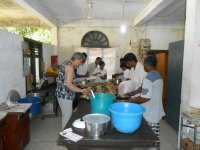 altAvab-mtpgCd025gwmEv1Jt-8cBEXSW-SherFUg6rtZ35.jpg40,7 KB · Aufrufe: 1
altAvab-mtpgCd025gwmEv1Jt-8cBEXSW-SherFUg6rtZ35.jpg40,7 KB · Aufrufe: 1 -
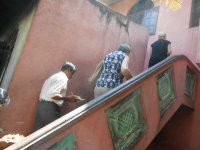 altAip5fB2q8C0ac_mG0fPClFbpio993FQhVTR1JLDNLRQo.jpg34 KB · Aufrufe: 1
altAip5fB2q8C0ac_mG0fPClFbpio993FQhVTR1JLDNLRQo.jpg34 KB · Aufrufe: 1 -
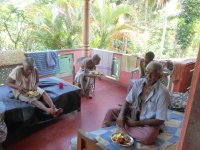 altAlUh_TAXOkxMArF3CI6z5-CbW9O7qKmecLDZr_iTurgJ.jpg61,8 KB · Aufrufe: 1
altAlUh_TAXOkxMArF3CI6z5-CbW9O7qKmecLDZr_iTurgJ.jpg61,8 KB · Aufrufe: 1 -
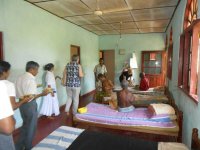 altAst84Pobgkp0wktXlA60MKLo4E0IYzOAVaHzqRqxpQDP.jpg39,5 KB · Aufrufe: 1
altAst84Pobgkp0wktXlA60MKLo4E0IYzOAVaHzqRqxpQDP.jpg39,5 KB · Aufrufe: 1 -
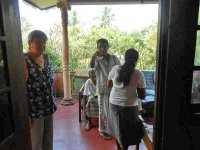 altAjx7r_pMAgdPhPHBUAWnTFccMVvvZO6decoH3_C9G02r.jpg106 KB · Aufrufe: 1
altAjx7r_pMAgdPhPHBUAWnTFccMVvvZO6decoH3_C9G02r.jpg106 KB · Aufrufe: 1 -
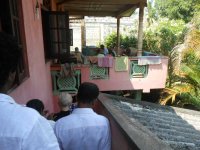 altAsRVF-CzPONfdRBZ3-Y5KZDWJmJPXnKOeBaxskRxS7ld.jpg52,7 KB · Aufrufe: 1
altAsRVF-CzPONfdRBZ3-Y5KZDWJmJPXnKOeBaxskRxS7ld.jpg52,7 KB · Aufrufe: 1 -
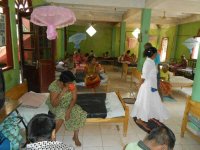 altAg1szF4IMHlKKzga5013C71k7LxQ4PGVcC8aKI1Ars2z.jpg48,6 KB · Aufrufe: 1
altAg1szF4IMHlKKzga5013C71k7LxQ4PGVcC8aKI1Ars2z.jpg48,6 KB · Aufrufe: 1 -
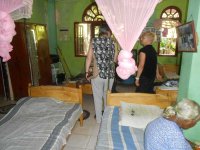 altAm4mfc659QM_2kmtpovZ-pzCh76xElbovFBsZWGUHVBu.jpg50,5 KB · Aufrufe: 1
altAm4mfc659QM_2kmtpovZ-pzCh76xElbovFBsZWGUHVBu.jpg50,5 KB · Aufrufe: 1 -
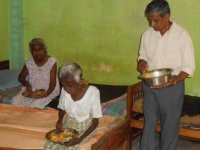 altAmddvlDSfweWoAz-cpyzl_A7S_Nr4kTllR8koEJj2XWK.jpg30,9 KB · Aufrufe: 1
altAmddvlDSfweWoAz-cpyzl_A7S_Nr4kTllR8koEJj2XWK.jpg30,9 KB · Aufrufe: 1 -
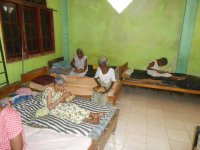 altAnrNa4C5EsfFWxCwSzqQueVZiBwqExbneuDwK15aHIpO.jpg41,4 KB · Aufrufe: 1
altAnrNa4C5EsfFWxCwSzqQueVZiBwqExbneuDwK15aHIpO.jpg41,4 KB · Aufrufe: 1 -
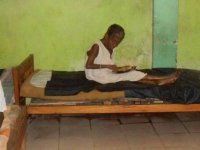 altAntuuWshgSovHI-rENKvep3R6eemWj1swzQe8BQ4eosr.jpg26,1 KB · Aufrufe: 1
altAntuuWshgSovHI-rENKvep3R6eemWj1swzQe8BQ4eosr.jpg26,1 KB · Aufrufe: 1 -
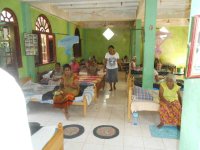 altAoBOh9_flVK0dWZ_i5FSCuuIM47onLW--m2aZ5uSHBl9.jpg42,8 KB · Aufrufe: 1
altAoBOh9_flVK0dWZ_i5FSCuuIM47onLW--m2aZ5uSHBl9.jpg42,8 KB · Aufrufe: 1 -
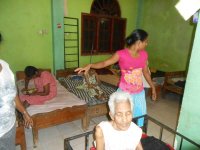 altAp2PveE8OezVZriwgXvhH9HPbqmp8dhBlvprwaNBzBe_.jpg39,4 KB · Aufrufe: 1
altAp2PveE8OezVZriwgXvhH9HPbqmp8dhBlvprwaNBzBe_.jpg39,4 KB · Aufrufe: 1 -
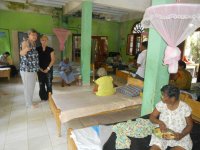 altApj3yOjWrvYiePv8RYLxKqJLqlOGf6VQPJeyVrz0werB.jpg45,3 KB · Aufrufe: 1
altApj3yOjWrvYiePv8RYLxKqJLqlOGf6VQPJeyVrz0werB.jpg45,3 KB · Aufrufe: 1 -
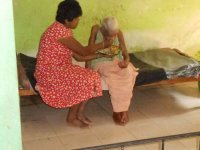 altAoTU_fPMRqZQp9wYT040kiJREOB9L557WohkcC1BSAtH.jpg34,7 KB · Aufrufe: 1
altAoTU_fPMRqZQp9wYT040kiJREOB9L557WohkcC1BSAtH.jpg34,7 KB · Aufrufe: 1 -
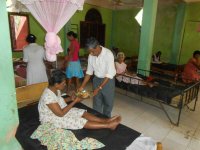 altAt5FhCeV0ibZCFStkzH8hxgtxCJfCvkO_i0hjQ2trIxj.jpg41 KB · Aufrufe: 1
altAt5FhCeV0ibZCFStkzH8hxgtxCJfCvkO_i0hjQ2trIxj.jpg41 KB · Aufrufe: 1 -
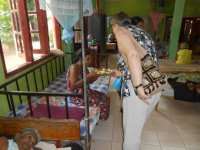 altAtYXtXVnLW7amkRJg0NM_M59vb9XYzE9I5in5-T5jQFu.jpg48,7 KB · Aufrufe: 1
altAtYXtXVnLW7amkRJg0NM_M59vb9XYzE9I5in5-T5jQFu.jpg48,7 KB · Aufrufe: 1 -
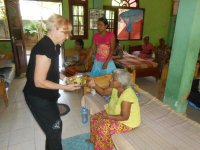 altAqrOWpvpBP0pl69nyd3Na-Pi1B4MjtYvmIDISrsf7N9y.jpg43,1 KB · Aufrufe: 1
altAqrOWpvpBP0pl69nyd3Na-Pi1B4MjtYvmIDISrsf7N9y.jpg43,1 KB · Aufrufe: 1 -
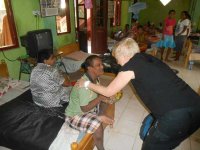 altAreuiW4_OFitX10GyWeKn5ZBI_xY4MrcFm3re6bb6UG3.jpg45,5 KB · Aufrufe: 1
altAreuiW4_OFitX10GyWeKn5ZBI_xY4MrcFm3re6bb6UG3.jpg45,5 KB · Aufrufe: 1 -
 WP_20140122_016.jpg130,5 KB · Aufrufe: 1
WP_20140122_016.jpg130,5 KB · Aufrufe: 1 -
 WP_20140122_017.jpg127,3 KB · Aufrufe: 1
WP_20140122_017.jpg127,3 KB · Aufrufe: 1 -
 WP_20140122_015.jpg133,6 KB · Aufrufe: 1
WP_20140122_015.jpg133,6 KB · Aufrufe: 1